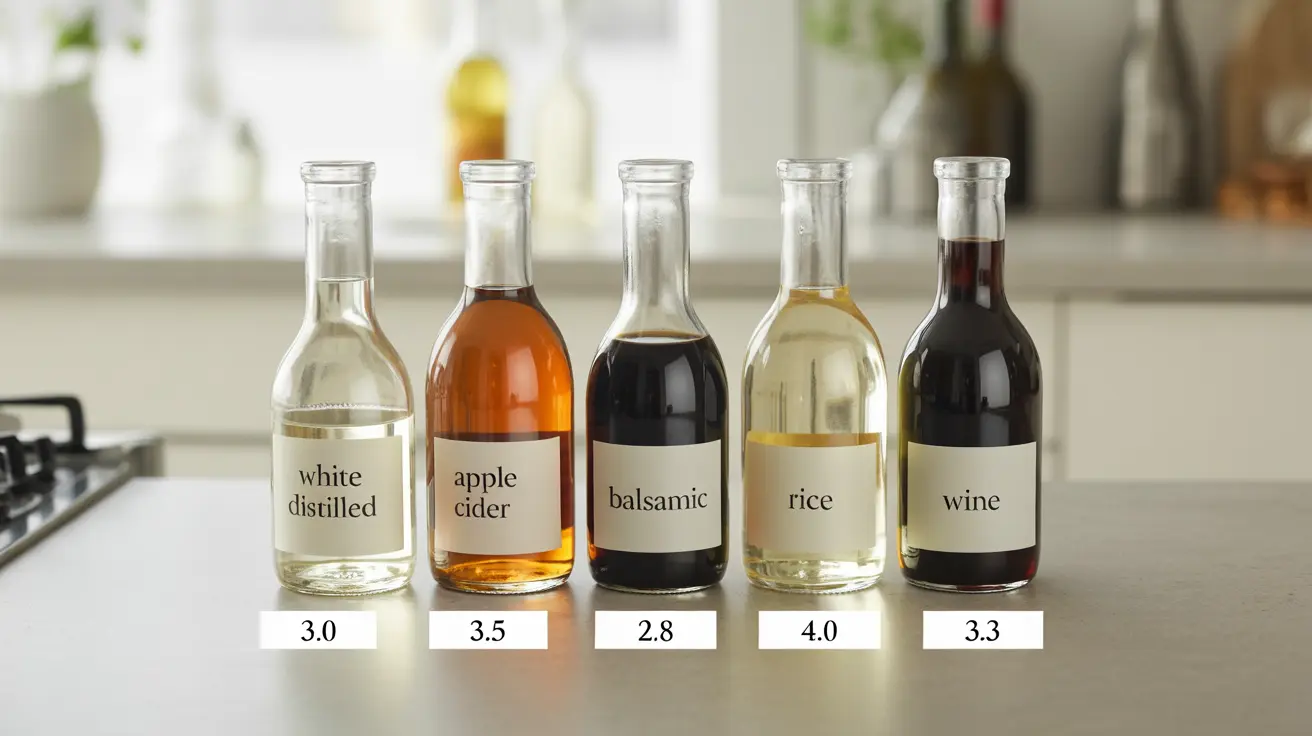Vinegar is a common household ingredient known for its distinctive sour taste and versatile applications. Understanding the pH level of vinegar is crucial for its effective use in cooking, cleaning, and potential health applications. This comprehensive guide explores vinegar's acidity, its various types, and how pH affects its functionality.
The Science of Vinegar's pH Level
Vinegar typically has a pH level ranging from 2 to 3, making it a significantly acidic substance. This acidity comes from acetic acid, which is formed during the fermentation process when ethanol is converted to acetic acid by specialized bacteria. Different types of vinegar may have slightly varying pH levels based on their production methods and source materials.
Types of Vinegar and Their pH Variations
Various types of vinegar exhibit different pH levels and characteristics:
- White distilled vinegar (pH 2.4-2.6)
- Apple cider vinegar (pH 2.8-3.0)
- Balsamic vinegar (pH 2.3-2.8)
- Rice vinegar (pH 4.1-4.3)
- Wine vinegar (pH 2.6-2.8)
Impact of Source Materials on Acidity
The starting material used to make vinegar significantly influences its final pH level and chemical composition. For example, apple cider vinegar contains additional compounds from apples, while white distilled vinegar is purely acetic acid and water, resulting in different pH levels and properties.
Practical Applications Based on pH
Cooking Applications
The acidic nature of vinegar makes it valuable in cooking for:
- Marinades and tenderizing meat
- Preserving foods
- Balancing flavors in dishes
- Reacting with baking soda in baked goods
Cleaning Properties
Vinegar's low pH makes it an effective cleaning agent by:
- Breaking down mineral deposits
- Killing certain bacteria and mold
- Dissolving soap scum and grease
- Removing stains and odors
Safety and Dilution Considerations
Due to its high acidity, vinegar should be used with caution. Direct contact with skin or surfaces should be avoided, and proper dilution is essential for most applications. When using vinegar for cleaning or consumption, it's recommended to dilute it appropriately to prevent potential damage or adverse effects.
Frequently Asked Questions
What is the pH level of vinegar, and how does it affect its use in cooking and cleaning? Vinegar typically has a pH level between 2 and 3, making it highly acidic. This acidity makes it effective for both cooking (flavor enhancement, food preservation) and cleaning (breaking down minerals, killing bacteria).
Can consuming vinegar really help alkalize my body's pH, or is it just a myth? Despite being acidic, vinegar doesn't significantly affect the body's pH levels. The body maintains its pH through complex buffering systems, and consuming vinegar won't meaningfully alter this balance.
How does the type of vinegar (like apple cider or balsamic) affect its pH and nutritional properties? Different vinegars have varying pH levels and nutritional profiles based on their source materials. For example, apple cider vinegar (pH 2.8-3.0) contains additional beneficial compounds from apples, while white vinegar (pH 2.4-2.6) is primarily acetic acid and water.
Is it safe to use vinegar as a natural remedy for various health issues, and what are its potential benefits? Vinegar can be safely used as a natural remedy when properly diluted. While it may offer benefits like antimicrobial properties and potential blood sugar management, it's important to consult healthcare providers before using it medicinally.
How does diluting vinegar with water change its effectiveness as a cleaning agent or a health supplement? Diluting vinegar reduces its acidity and makes it safer to use but also decreases its potency. For cleaning, a 1:1 ratio with water is often effective, while for consumption, a much higher dilution (1-2 tablespoons in a large glass of water) is recommended.




